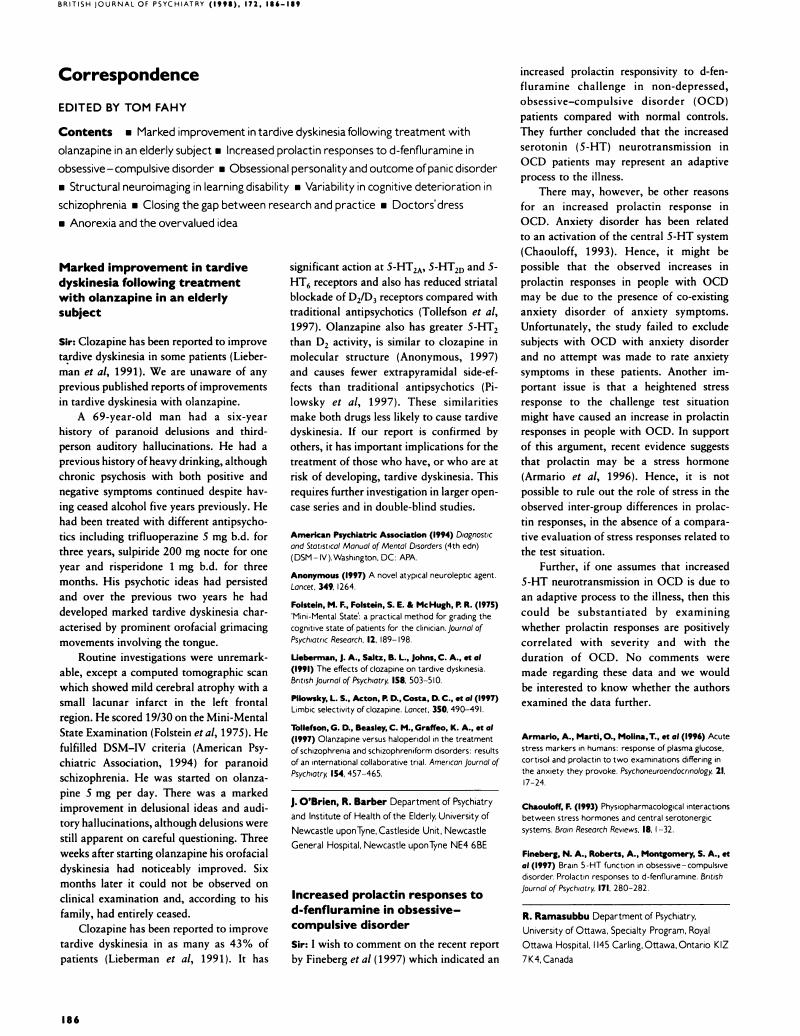No CrossRef data available.
Article contents
Increased prolactin responses to d-fenfluramine in obsessive-compulsive disorder
Published online by Cambridge University Press: 02 January 2018
Abstract
An abstract is not available for this content so a preview has been provided. As you have access to this content, a full PDF is available via the ‘Save PDF’ action button.

- Type
- Columns
- Information
- Copyright
- Copyright © 1998 The Royal College of Psychiatrists
References
Armario, A.
Marti, O.
Molina, T.
et al (1996) Acute stress markers in humans: response of plasma glucose. Cortisol and prolactin to two examinations differing in the anxiety they provoke. Psychoneuroendocrinology, 21, 17–24.Google Scholar
Chaouloff, F. (1993) Physiopharmacological interactions between stress hormones and central serotonergic systems, Brain Research Reviews, 18, 1–32.CrossRefGoogle ScholarPubMed
Fineberg, N. A.
Roberts, A.
Montgomery, S. A.
et al (1997) Brain 5-HT function in obsessive-compulsive disorder. Prolactin responses to d-fenfluramine. British Journal of Psychiatry, 171, 280–282.Google Scholar





eLetters
No eLetters have been published for this article.